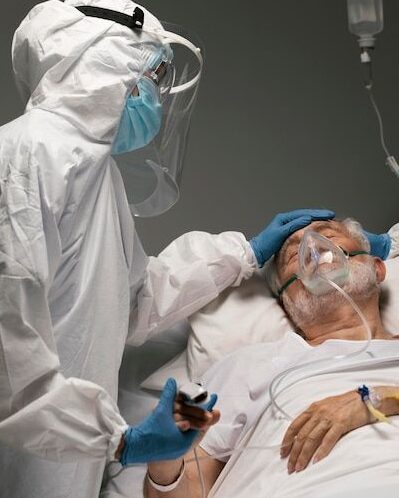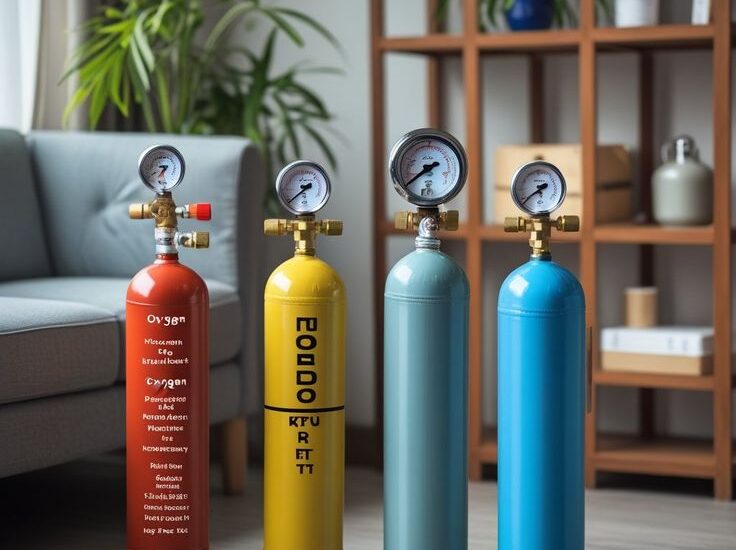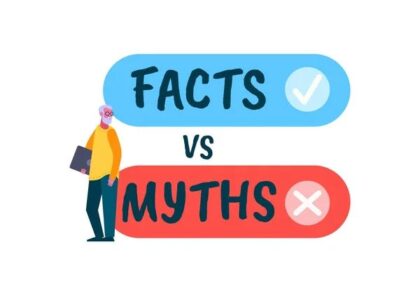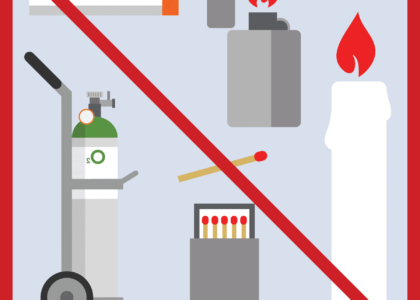What to Know Before Buying an Oxygen Cylinder for Home Use
Introduction
Thinking about getting an oxygen cylinder for home use? You’re not alone. Whether it’s for a loved one recovering from a respiratory illness or to support a chronic condition like COPD, having oxygen therapy at home can be life-saving. But before you make a purchase, there’s a lot you need to know to ensure safety, reliability, and peace of mind. This guide will walk you through everything—from types of cylinders to how to store them safely at home.
Why You Might Need Oxygen at Home
Health Conditions Requiring Oxygen
Oxygen therapy isn’t just for hospitals. It’s commonly prescribed for people dealing with low oxygen levels due to COPD, COVID-19, pneumonia, asthma, or post-surgical recovery. It helps maintain adequate oxygen levels, reduces breathlessness, and improves overall quality of life.
Doctor’s Prescription Is a Must
You can’t (and shouldn’t) self-diagnose the need for oxygen. A doctor will assess your oxygen saturation (SpO2) and recommend oxygen therapy if necessary. Always get a proper prescription before buying a cylinder.
Types of Oxygen Cylinders
Portable vs. Stationary Cylinders
There are mainly two types: portable and stationary. Portable cylinders are lightweight and ideal for people who move around or travel. Stationary cylinders are larger and best for homebound patients needing continuous oxygen supply.
Sizes and Capacity
Cylinders come in various sizes like B-type, D-type, etc. The size you need depends on how many hours of oxygen flow you require daily. Larger cylinders last longer but are heavier and less mobile.
Medical-Grade vs. Industrial Oxygen
Purity and Safety Standards
Medical oxygen must be at least 99% pure and free from harmful contaminants. It’s manufactured, stored, and delivered under strict standards to ensure it’s safe for human use.
Dangers of Using the Wrong Type
Industrial oxygen may contain impurities and is meant for welding or machinery—not for breathing. Using it can be dangerous or even fatal. Always confirm that you’re buying medical-grade oxygen from a licensed supplier.

How to Choose the Right Oxygen Supplier
Check Certification and Experience
Make sure the supplier is authorized, certified, and has experience in handling medical oxygen. Ask about their safety protocols and cylinder sanitization process.
Availability of 24/7 Support
Oxygen needs don’t follow a schedule. Emergencies can arise any time, so choose a supplier that offers round-the-clock service and quick delivery options.
Essential Accessories You’ll Need
Flow Meter and Regulator
These devices control the amount of oxygen being delivered. Your supplier should provide a high-quality flow regulator calibrated to your doctor’s prescribed flow rate.
Nasal Cannula or Oxygen Mask
These are the interfaces through which the patient inhales oxygen. Choose what’s comfortable and medically recommended.
Trolley or Stand for Mobility
For larger cylinders, a trolley or a stand helps you move and position them safely around the home.
How Long Will a Cylinder Last?
Understanding Flow Rate and Usage
The lifespan of a cylinder depends on your oxygen flow rate (liters per minute) and the cylinder size. For example, a B-type cylinder on 2 LPM may last around 4–5 hours.
Backup Cylinders for Emergencies
Always have at least one backup cylinder ready. Power cuts or delays in refilling can occur, and you don’t want to take that risk.
Storage and Safety Tips at Home
Where to Place Your Cylinder
Keep the cylinder upright in a well-ventilated, cool area away from heat sources. Avoid placing it near the kitchen or direct sunlight.
Avoiding Fire Hazards
Never smoke or allow open flames near the oxygen cylinder. Also, avoid using flammable substances like oils or aerosols near it.
Maintenance and Refilling
Cleaning and Checking for Leaks
Wipe the cylinder with a clean, dry cloth regularly. Check for signs of wear, rust, or leaks. If you smell gas or hear a hissing sound, turn it off and call your supplier.
When and How to Refill Safely
Know when your cylinder is nearing empty. Don’t wait until it’s completely exhausted. Call your supplier for timely refills, and never try to refill a cylinder on your own.
Conclusion
Buying an oxygen cylinder for home use is a serious decision. But with the right information, you can make a choice that supports health and safety. Always consult a doctor, choose a reliable supplier, and follow all safety protocols. Oxygen is life-supporting—but only when used correctly.
FAQs
1. Can I buy an oxygen cylinder without a prescription?
It’s not recommended. Always consult your doctor before using medical oxygen.
2. How do I know what size cylinder I need?
Your doctor or supplier will suggest the right size based on your oxygen flow needs.
3. Is it safe to store oxygen at home?
Yes, if stored properly in a well-ventilated, cool area and handled with care.
4. Can I travel with an oxygen cylinder?
Portable cylinders are available and safe for travel. Always carry medical documents with you.
5. What is the difference between concentrators and cylinders?
Concentrators use electricity to generate oxygen, while cylinders store compressed oxygen. Each has pros and cons depending on usage and power availability.
Conclusion
Buying an oxygen cylinder for home use is not just about getting the equipment—it’s about ensuring safety, reliability, and proper care for your loved ones. Whether it’s for a temporary illness or a long-term health condition, understanding the type of oxygen cylinder, its size, usage, maintenance, and safety protocols is essential. Always consult your doctor before making a purchase, choose a trusted medical oxygen supplier, and never compromise on quality or safety standards. With the right information and precautions, oxygen therapy at home can offer life-saving support and much-needed peace of mind.





